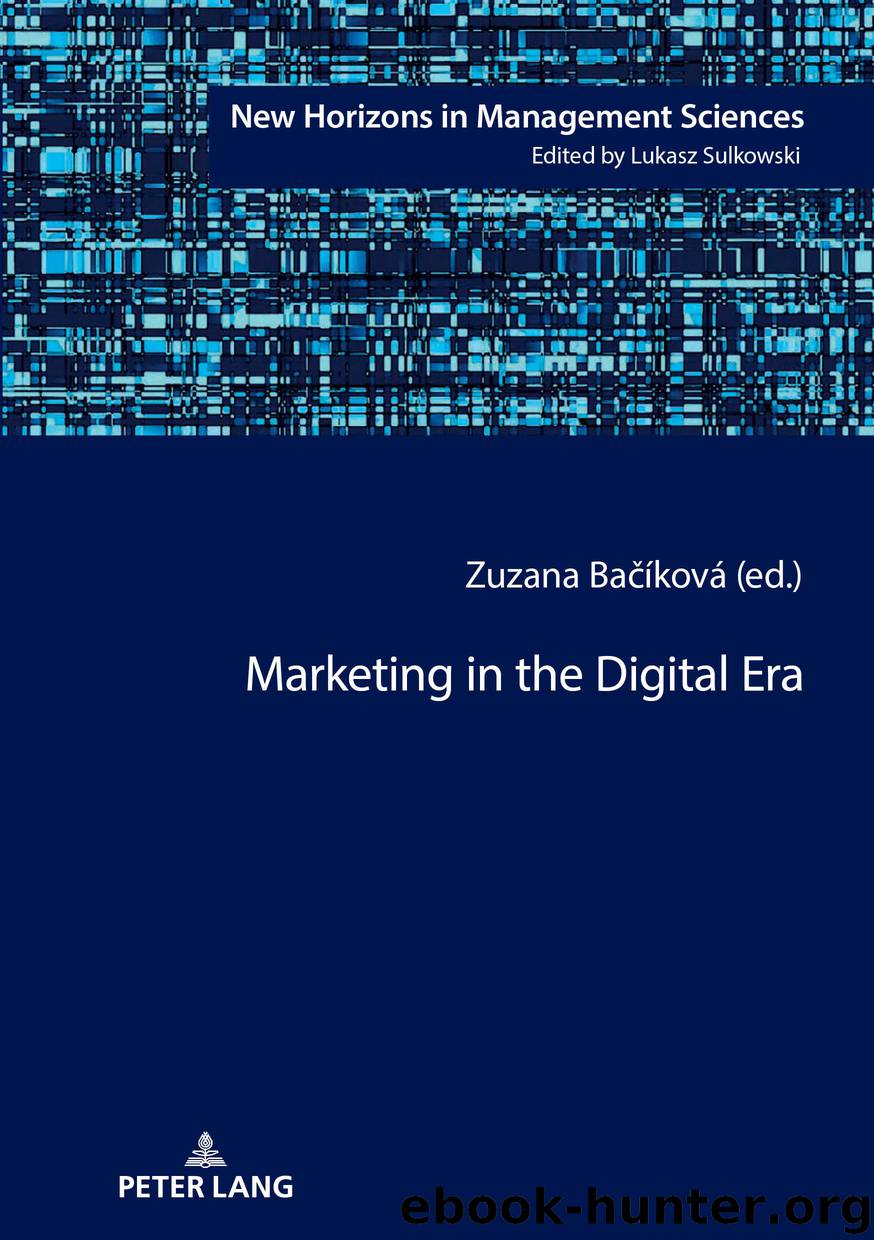Marketing in the Digital Era by Zuzana Bacíková

Author:Zuzana Bacíková
Language: eng
Format: epub
Publisher: Peter Lang
Published: 2018-06-20T11:26:51+00:00
4.3 CSR
There are many definitions of CSR provided by various academics and commentators, companies, civil societies, governmental as well as consulting organizations (Scherer et al., 2011; Moon, 2014). CSR is dominant in business reporting. Taking into consideration the width and depth of understanding regarding CSR, as well as a variety of activities through which we can look at socially responsible business, the clear univocal definition would be problematic because a definition always stems from the viewpoint of particular interest group paying attention to this topic (Džupina, 2013). A fairly often used term for social corporate responsibility is social sustainability with its basic principles applied in nine areas: ethic, governance, transparency, business relationships, financial return, community involvement, product value, employment practices and environmental protection (Epstein, 2008). Sustainability shouldn’t be managed as a PR strategy to pacify stakeholder concerns because it can be quite risky. Stakeholders expect actions and results to comply with a company’s rhetoric (Epstein, 2008). Sustainability means mutually connected social, environmental and economic progress. Companies, from small businesses to transnational corporations, have to embrace and expand questions and answers about business sustainability at a local, regional, national and international level (Horská et al., 2013). Some writers discuss corporate social responsibility as a universal ethical norm. Others prefer to think of corporate social responsibility as a pragmatic public relations necessity. As stated by Esrock and Leichty, the central elements of CSR seem to be (1998):
(1) maintaining fair and honest business practices,
(2) maintaining product safety and reliability,
(3) taking care of employees,
(4) improving environmental record.
According to Kesavan, we can define CSR through four pillars of sustainability, education, community, and CSR reporting and communications (Kesavan et al., 2013).←93 | 94→
The definition of corporate responsibility can be implemented in the following ways:
• “The firm’s considerations of, and response to, issues beyond the narrow economic, technical and legal requirements of the firm to accomplish social benefits along with the traditional economic gains which the firm seeks” (Davis, 1973).
• “The economic, legal, ethical and discretionary expectations that society has of organizations” (Caroll, 1979).
• “Policies and practices of corporations that reflect business responsibility for some of the wider societal good” (Matten et al., 2008).
CSR means that, in addition to strict compliance with legal, technical and economic obligations, the company integrates social, labor, environmental and human concerns through a voluntary commitment. Company thus includes “the moral dimension” into decision-making process, strategic planning and concept of policies, in such a way that all business areas are involved (Castelló, 2010). CSR refers to relationships between corporation and all stakeholders (i.e. customers, employees, investors, suppliers, government) as well as their competitors. The aim of corporate social responsibility is not only profit, but also people’s welfare and sustainability of this planet (Mulyadi et al., 2012).
A frequent tool of CSR activities is a financial or product contribution to charitable or community organizations (Sprinkle et al., 2010). Most companies invest their time and money into creating transparent CSR reports with majority of them forgetting to engage the public. Organizations present their CSR activities on their websites because they believe CSR will
Download
This site does not store any files on its server. We only index and link to content provided by other sites. Please contact the content providers to delete copyright contents if any and email us, we'll remove relevant links or contents immediately.
Things Are What You Make of Them: Life Advice for Creatives by Adam J. Kurtz(1788)
The Monuments Men by Robert M. Edsel(1714)
The Freelance Manifesto: A Field Guide for the Modern Motion Designer by Joey Korenman(1535)
Find Your Artistic Voice by Lisa Congdon(1365)
The Business of Being an Artist by Daniel Grant(1316)
101 Gag Ideas: Companion to the One Minute Caricature by James van der Keyl(1296)
Boom by Michael Shnayerson(1270)
Your Art Will Save Your Life by Beth Pickens(1219)
Your Inner Critic Is a Big Jerk by Danielle Krysa(1210)
Breakfast at Sotheby's(1175)
The Lady in Gold by Anne-marie O'connor(1165)
Seven Days in the Art World by Sarah Thornton(1156)
Create Your Art Career by Rhonda Schaller(1152)
How to Survive and Prosper as an Artist by Caroll Michels(1131)
When Talent Isn't Enough: Business Basics for the Creatively Inclined by Kristen Fischer(1088)
33 Artists in 3 Acts by Sarah Thornton(1084)
Need you Now (Top Shelf Romance Book 2) by unknow(1055)
Art Held Hostage by John Anderson(1047)
Art of the Deal by Noah Horowitz(1044)
